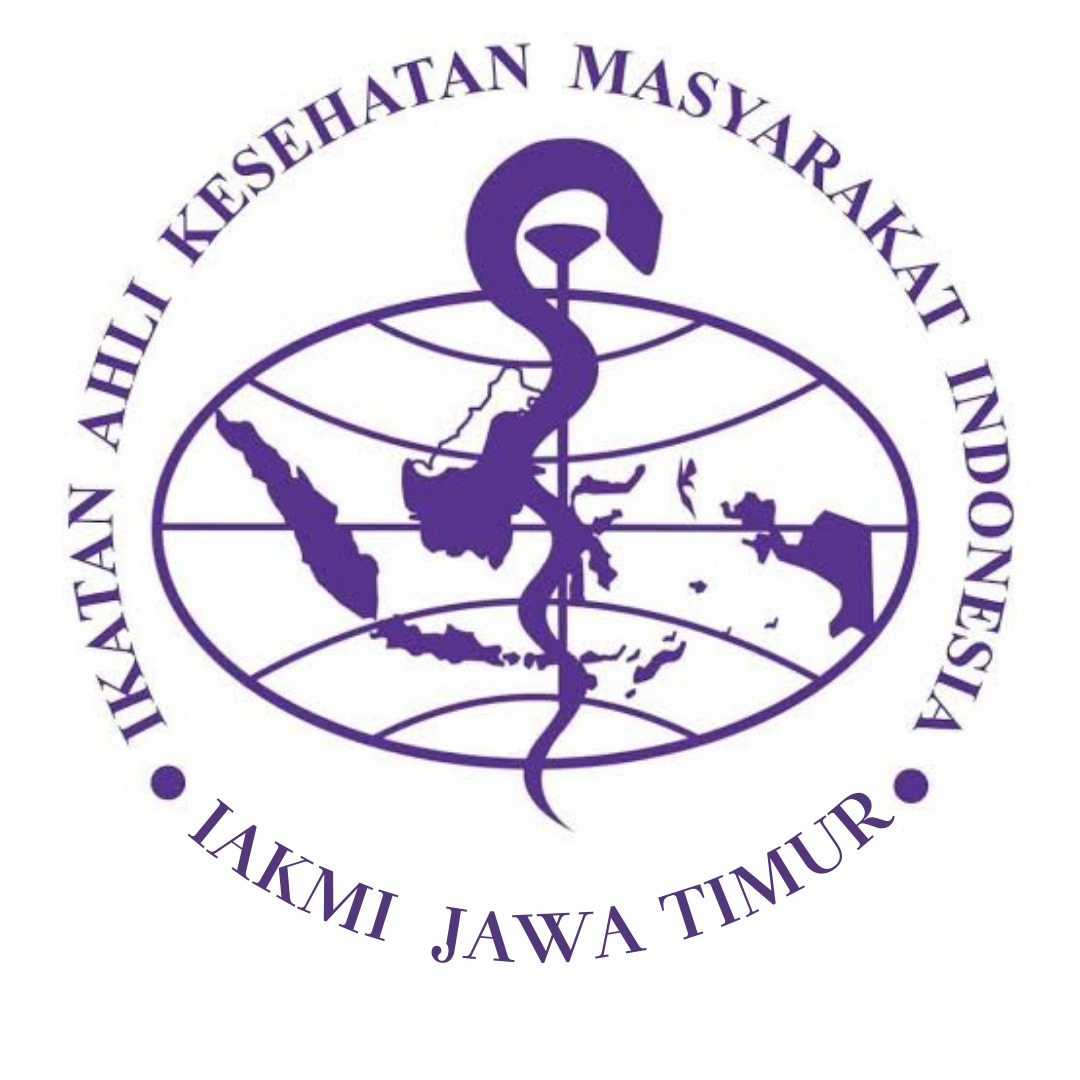Role of Insulin-Like Growth Factor-1 and Adiponectin in The Association between Dietary Intake, Physical Activity, and Metabolic Syndrome in Malayaustronesia Children and Adolescent: A Systematic Review Protocol

Downloads
Background: Risk factors of metabolic syndromes develop in childhood and tacks across life, which may lead them to a higher risk of getting cardiovascular diseases and premature deaths. A healthy diet and being physically active are supposed to modify the risk of metabolic syndromes (MetS). However, those observations primarily work in adult samples and the biological mechanisms that link that behavioral factor and MetS in children and adolescents still need to be explored. Asian people are more likely to get MetS than their white counterparts, but study in Malay-Austronesia children is minimal.
Objectives: This study aims to comprehensively review and appraise studies that elucidate biological factors (insulin-like growth factor-1 and adiponectin) that possibly mediate the relationship between those risk factors and MetS in Malay-Austronesia children.
Methods: The search will be performed in PubMed, Scopus, Web of Science, Google Scholar, and local databases Garuda (Garba Rujukan Digital, Indonesian) and Mycite (Malaysian citation index). All prospective cohort studies that examine the association of one of the behavioral factors (dietary intakes OR physical activity) AND one of the biological factors (Insulin-like growth factor OR adiponectin) with MetS or its components in healthy children with the exposures start from the age of 1 and 12 years of age and outcomes begin from 1 year and two months until the age of 18 years old are eligible. Only literature in English and local languages from inception to 31 December 2023 that match eligibility criteria will be included. National Institute of Health tool for observational studies will be used to assess the quality of included studies. This work was registered to PROSPERO CRD42023471481.
Results: The findings may shed light on how the predefined biological factors mediate those behavioural factors on MetS in children. The findings will also be published in a peer-reviewed journal.
Conclusion: This review utilizes relevant databases to optimize the searching of eligible studies. Eligible studies will be extracted by more (four) researchers who work independently with a predefined data extraction template. There are possibility some studies report significant finding on IGF-1 binding protein instead of total IGF-1 or its molar ratio will challenge the statistical analysis.
Aguirre, G.A. et al. (2016) ‘Insulin-like growth factor-1 deficiency and metabolic syndrome’, Journal of Translational Medicine, 14(1), p. 3. Available at: https://doi.org/10.1186/s12967-015-0762-z.
Alamnia, T.T. et al. (2021) ‘Metabolic risk factors for non-communicable diseases in Ethiopia: a systematic review and meta-analysis’, BMJ Open, 11(11), p. e049565. Available at: https://doi.org/10.1136/bmjopen-2021-049565.
Ambachew, S. et al. (2020) ‘The Prevalence of Metabolic Syndrome in Ethiopian Population: A Systematic Review and Meta-analysis’, Journal of Obesity. Edited by M. Musella, 2020, pp. 1–14. Available at: https://doi.org/10.1155/2020/2701309.
Bernhardsen, G.P. et al. (2020) ‘Birth weight, cardiometabolic risk factors and effect modification of physical activity in children and adolescents: pooled data from 12 international studies’, International Journal of Obesity, 44(10), pp. 2052–2063. Available at: https://doi.org/10.1038/s41366-020-0612-9.
Bitew, Z.W. et al. (2020) ‘Metabolic syndrome among children and adolescents in low and middle income countries: a systematic review and meta-analysis’, Diabetology & Metabolic Syndrome, 12(1), p. 93. Available at: https://doi.org/10.1186/s13098-020-00601-8.
Bovolini, A. et al. (2021) ‘Metabolic Syndrome Pathophysiology and Predisposing Factors’, International Journal of Sports Medicine, 42(03), pp. 199–214. Available at: https://doi.org/10.1055/a-1263-0898.
Chen, G.-C. et al. (2015) ‘Dairy products consumption and metabolic syndrome in adults: systematic review and meta-analysis of observational studies’, Scientific Reports, 5(1), p. 14606. Available at: https://doi.org/10.1038/srep14606.
Fabiani, R., Naldini, G. and Chiavarini, M. (2019) ‘Dietary Patterns and Metabolic Syndrome in Adult Subjects: A Systematic Review and Meta-Analysis’, Nutrients, 11(9), p. 2056. Available at: https://doi.org/10.3390/nu11092056.
Floegel, A. et al. (2014) ‘Linking diet, physical activity, cardiorespiratory fitness and obesity to serum metabolite networks: findings from a population-based study’, International Journal of Obesity, 38(11), pp. 1388–1396. Available at: https://doi.org/10.1038/ijo.2014.39.
Friend, A., Craig, L. and Turner, S. (2013) ‘The Prevalence of Metabolic Syndrome in Children: A Systematic Review of the Literature’, Metabolic Syndrome and Related Disorders, 11(2), pp. 71–80. Available at: https://doi.org/10.1089/met.2012.0122.
Ghanei Gheshlagh, R., Parizad, N. and Sayehmiri, K. (2016) ‘The Relationship Between Depression and Metabolic Syndrome: Systematic Review and Meta-Analysis Study’, Iranian Red Crescent Medical Journal, 18(6). Available at: https://doi.org/10.5812/ircmj.26523.
Grabia, M., Markiewicz-Żukowska, R. and Socha, K. (2021) ‘Prevalence of Metabolic Syndrome in Children and Adolescents with Type 1 Diabetes Mellitus and Possibilities of Prevention and Treatment: A Systematic Review’, Nutrients, 13(6), p. 1782. Available at: https://doi.org/10.3390/nu13061782.
Grillo, L.P. et al. (2016) ‘Childhood stunting and the metabolic syndrome components in young adults from a Brazilian birth cohort study’, European Journal of Clinical Nutrition, 70(5), pp. 548–553. Available at: https://doi.org/10.1038/ejcn.2015.220.
Gutiérrez-Solis, A.L., Datta Banik, S. and Méndez-González, R.M. (2018) ‘Prevalence of Metabolic Syndrome in Mexico: A Systematic Review and Meta-Analysis’, Metabolic Syndrome and Related Disorders, 16(8), pp. 395–405. Available at: https://doi.org/10.1089/met.2017.0157.
Hayuningtyas, A. et al. (2021) ‘Dietary quality score is positively associated with serum adiponectin level in Indonesian preschool-age children living in the urban area of Jakarta’, PLOS ONE. Edited by P.B. Szecsi, 16(2), p. e0246234. Available at: https://doi.org/10.1371/journal.pone.0246234.
Ibrahim, M.S. et al. (2022) ‘Development and Validation of a Simple Risk Model for Predicting Metabolic Syndrome (MetS) in Midlife: A Cohort Study’, Diabetes, Metabolic Syndrome and Obesity: Targets and Therapy, Volume 15, pp. 1051–1075. Available at: https://doi.org/10.2147/DMSO.S336384.
Irakoze, L. et al. (2021) ‘Metabolic Syndrome in Offspring of Parents with Metabolic Syndrome: A Meta-Analysis’, Obesity Facts, pp. 1–15. Available at: https://doi.org/10.1159/000513370.
Izadi, V. and Azadbakht, L. (2015) ‘Specific dietary patterns and concentrations of adiponectin’, Journal of Research in Medical Sciences: The Official Journal of Isfahan University of Medical Sciences, 20(2), pp. 178–184.
Jankowska, A. et al. (2021) ‘Metabolic Syndrome in Obese Children—Clinical Prevalence and Risk Factors’, International Journal of Environmental Research and Public Health, 18(3), p. 1060. Available at: https://doi.org/10.3390/ijerph18031060.
Kassi, E. et al. (2011) ‘Metabolic syndrome: definitions and controversies’, BMC Medicine, 9(1), p. 48. Available at: https://doi.org/10.1186/1741-7015-9-48.
Koskinen, J. et al. (2017) ‘Childhood Age and Associations Between Childhood Metabolic Syndrome and Adult Risk for Metabolic Syndrome, Type 2 Diabetes Mellitus and Carotid Intima Media Thickness: The International Childhood Cardiovascular Cohort Consortium’, Journal of the American Heart Association, 6(8), p. e005632. Available at: https://doi.org/10.1161/JAHA.117.005632.
Krishnadath, I.S.K. et al. (2016) ‘Ethnic disparities in the prevalence of metabolic syndrome and its risk factors in the Suriname Health Study: a cross-sectional population study’, BMJ Open, 6(12), p. e013183. Available at: https://doi.org/10.1136/bmjopen-2016-013183.
Krishnamoorthy, Y. et al. (2020) ‘Prevalence of metabolic syndrome among adult population in India: A systematic review and meta-analysis’, PLOS ONE. Edited by J.A. Hirst, 15(10), p. e0240971. Available at: https://doi.org/10.1371/journal.pone.0240971.
Kusuma, D. et al. (2019) ‘On the verge of a chronic disease epidemic: comprehensive policies and actions are needed in Indonesia’, International Health, 11(6), pp. 422–424. Available at: https://doi.org/10.1093/inthealth/ihz025.
Lear, S.A. and Gasevic, D. (2019) ‘Ethnicity and Metabolic Syndrome: Implications for Assessment, Management and Prevention’, Nutrients, 12(1), p. 15. Available at: https://doi.org/10.3390/nu12010015.
Ler, P. et al. (2022) ‘Independent and joint effects of body mass index and metabolic health in mid- and late-life on all-cause mortality: a cohort study from the Swedish Twin Registry with a mean follow-up of 13 Years’, BMC Public Health, 22(1), p. 718. Available at: https://doi.org/10.1186/s12889-022-13082-3.
National Heart, Lung, and Blood Institute, N.H., Lung, and Blood Institute (2021) ‘Quality Assessment Tool for Observational Cohort and Cross-Sectional Studies’, July. Available at: https://www.nhlbi.nih.gov/health-topics/study-quality-assessment-tools (Accessed: 11 October 2023).
Page, M.J. et al. (2021) ‘The PRISMA 2020 statement: an updated guideline for reporting systematic reviews’, BMJ, p. n71. Available at: https://doi.org/10.1136/bmj.n71.
Reisinger, C. et al. (2021) ‘The prevalence of pediatric metabolic syndrome—a critical look on the discrepancies between definitions and its clinical importance’, International Journal of Obesity, 45(1), pp. 12–24. Available at: https://doi.org/10.1038/s41366-020-00713-1.
Rohatgi, A. (2022) ‘Webplotdigitizer: Version 4.5, 2021’, URL https://automeris. io/WebPlotDigitizer, 4(2).
Scuteri, A. et al. (2015) ‘Metabolic syndrome across Europe: Different clusters of risk factors’, European Journal of Preventive Cardiology, 22(4), pp. 486–491. Available at: https://doi.org/10.1177/2047487314525529.
Sigit, F.S. et al. (2020) ‘The prevalence of metabolic syndrome and its association with body fat distribution in middle-aged individuals from Indonesia and the Netherlands: a cross-sectional analysis of two population-based studies’, Diabetology & Metabolic Syndrome, 12(1), p. 2. Available at: https://doi.org/10.1186/s13098-019-0503-1.
Sigit, F.S. et al. (2021) ‘The associations of leptin and adiponectin with the metabolic syndrome in an Indonesian and a Dutch population’, Nutrition, Metabolism and Cardiovascular Diseases, 31(8), pp. 2426–2435. Available at: https://doi.org/10.1016/j.numecd.2021.05.012.
Stefan, N., Birkenfeld, A.L. and Schulze, M.B. (2021) ‘Global pandemics interconnected — obesity, impaired metabolic health and COVID-19’, Nature Reviews Endocrinology, 17(3), pp. 135–149. Available at: https://doi.org/10.1038/s41574-020-00462-1.
Sun, X. et al. (2022) ‘Omentin as an Independent Predictor of Metabolic Syndrome and Obesity Among Adolescents in Northeast China’, Diabetes, Metabolic Syndrome and Obesity: Targets and Therapy, Volume 15, pp. 3913–3922. Available at: https://doi.org/10.2147/DMSO.S388620.
Tawfik, G.M. et al. (2019) ‘A step by step guide for conducting a systematic review and meta-analysis with simulation data’, Tropical Medicine and Health, 47(1), p. 46. Available at: https://doi.org/10.1186/s41182-019-0165-6.
Thor, S.M., Yau, J.W. and Ramadas, A. (2021) ‘Nutritional and lifestyle intervention strategies for metabolic syndrome in Southeast Asia: A scoping review of recent evidence’, PLOS ONE. Edited by H. Boon-Peng, 16(9), p. e0257433. Available at: https://doi.org/10.1371/journal.pone.0257433.
Zhu, L. et al. (2021) ‘Lean Yet Unhealthy: Asian American Adults Had Higher Risks for Metabolic Syndrome than Non-Hispanic White Adults with the Same Body Mass Index: Evidence from NHANES 2011–2016’, Healthcare, 9(11), p. 1518. Available at: https://doi.org/10.3390/healthcare9111518.
Copyright (c) 2024 Dudung Angkasa, S.Gz., M.Gizi.RD

This work is licensed under a Creative Commons Attribution-ShareAlike 4.0 International License.
Media Gizi Kesmas by Unair is licensed under a Creative Commons Attribution-ShareAlike 4.0 International License.
1. The journal allows the author(s) to hold the copyright and to retain the publishing right of the article without restrictions.
2. The legal formal aspect of journal publication accessibility refers to Creative Commons Attribution-Share-Alike (CC BY-SA).
3. The Creative Commons Attribution-Share-Alike (CC BY-SA) license allows re-distribution and re-use of a licensed work on the conditions that the creator is appropriately credited and that any derivative work is made available under "the same, similar or a compatible license”. Other than the conditions mentioned above, the editorial board is not responsible for copyright violations.



















